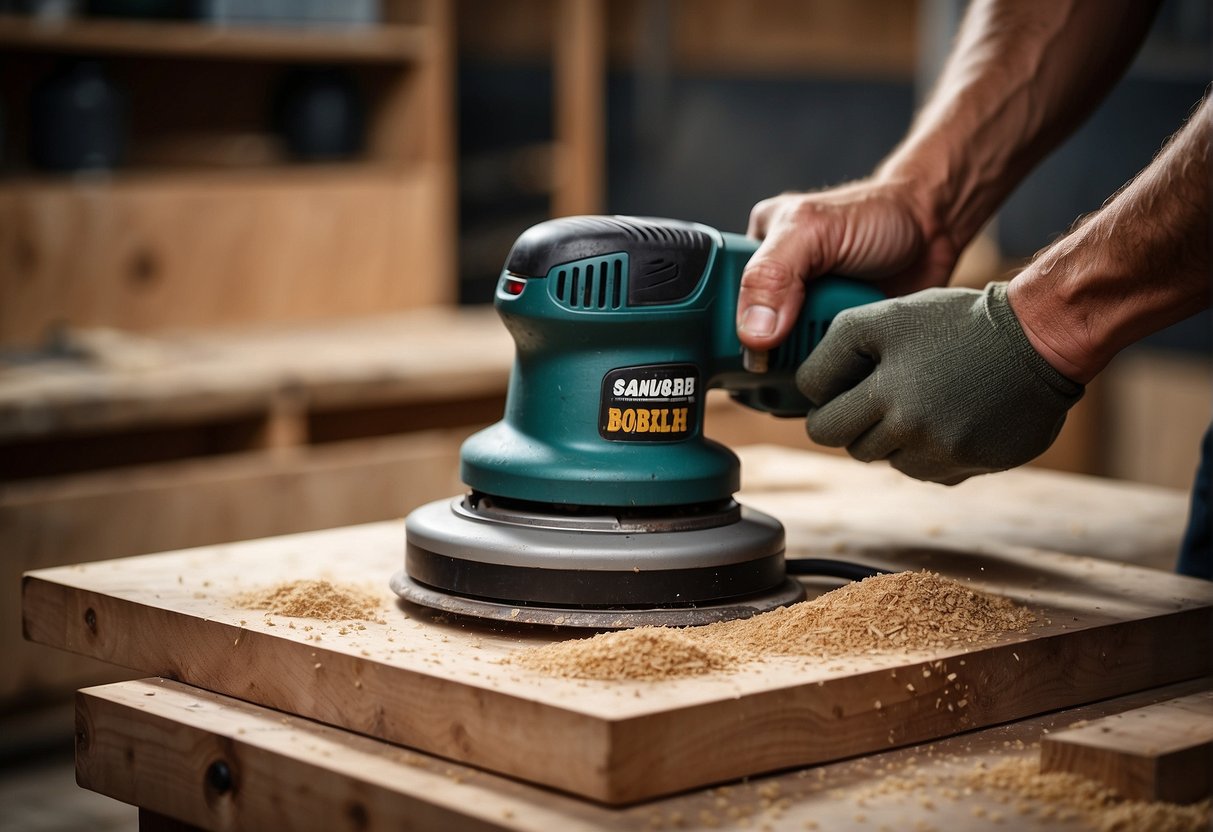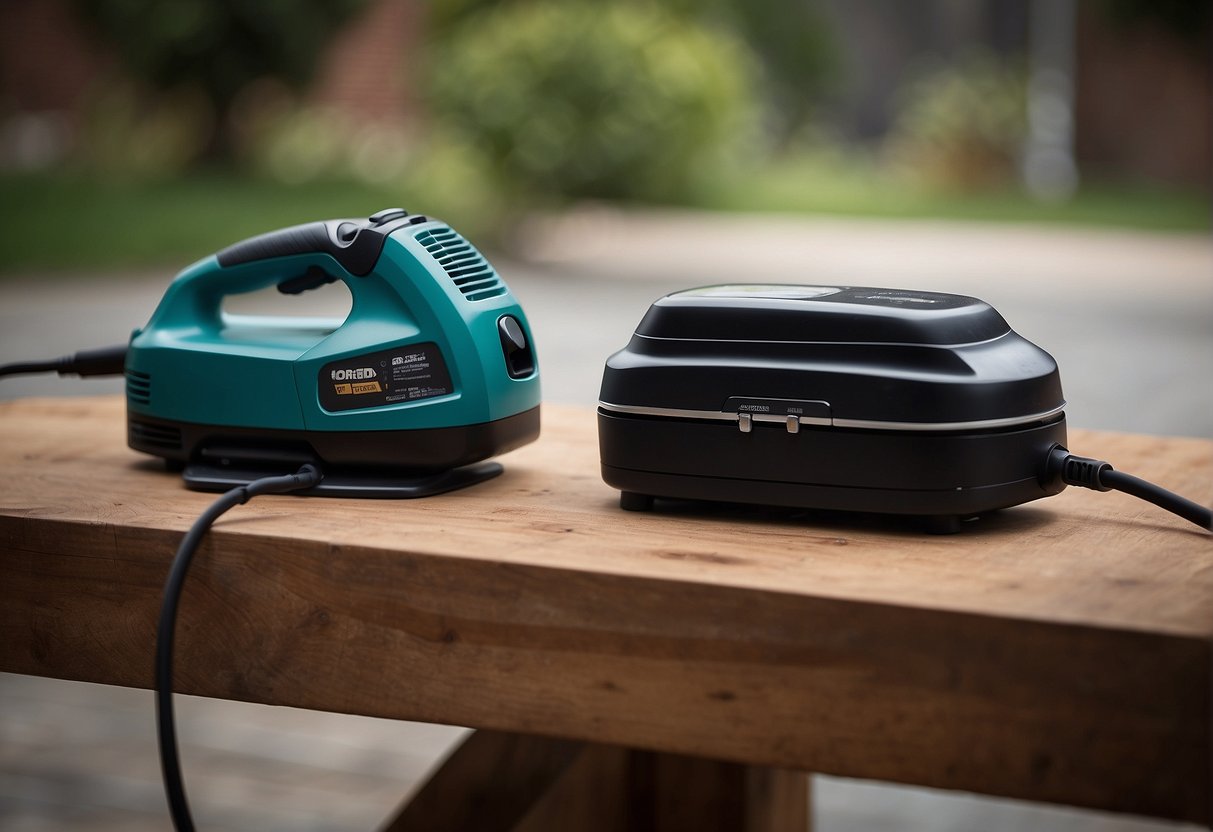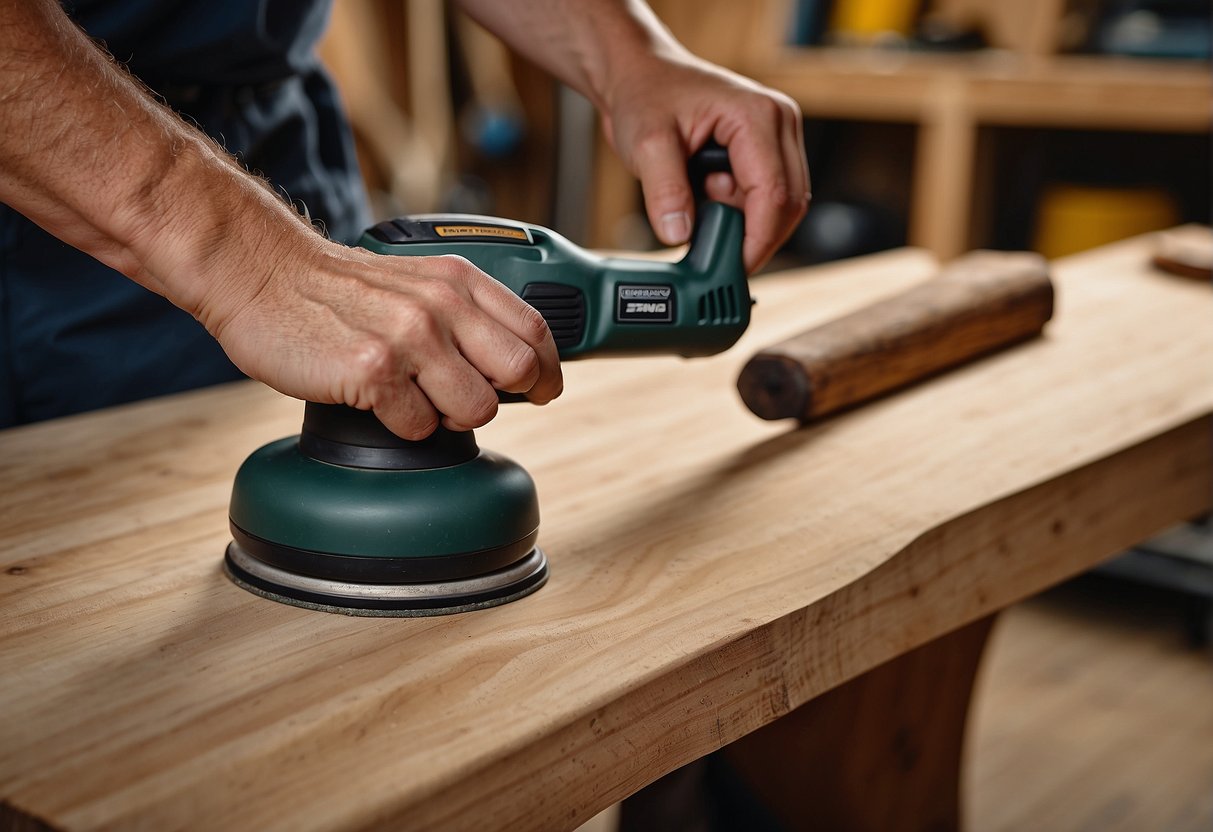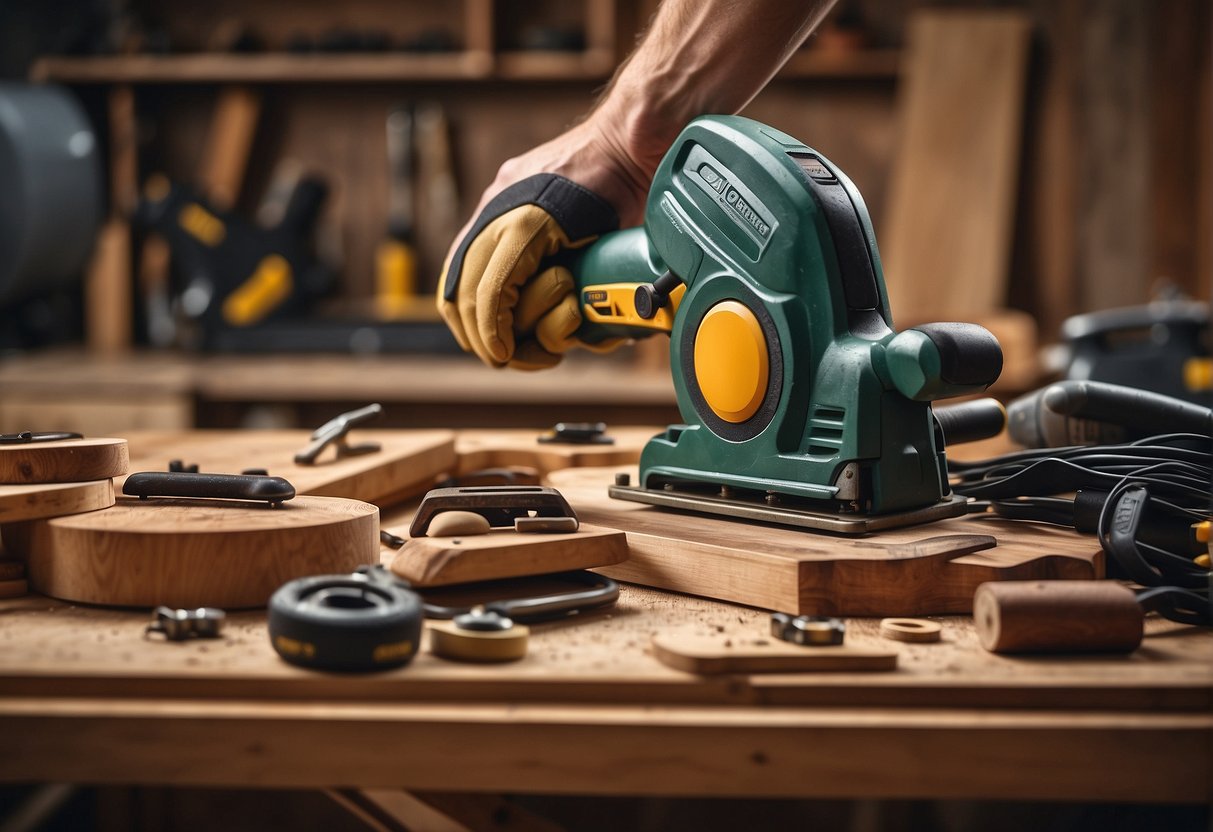As a DIY enthusiast or professional woodworker, you might be wondering which type of sander is best for your projects – corded or cordless. Both types of sanders have their unique advantages and disadvantages, making it challenging to decide which one to choose. In this article, I will provide an overview of corded and cordless sanders, their technical specifications, functional differences, types of sanders and their uses, and how to choose the right sander for your project.
Corded sanders have been around for a long time and are known for their consistent power output, making them ideal for heavy-duty tasks. On the other hand, cordless sanders are portable and lightweight, making them suitable for small DIY projects. However, they have limited battery life and require recharging. A hybrid sander that combines both corded and cordless features provides the best of both worlds by providing power and portability.
Key Takeaways
- Corded sanders are ideal for heavy-duty tasks, while cordless sanders are suitable for small DIY projects.
- A hybrid sander that combines both corded and cordless features provides the best of both worlds.
- Choosing the right sander for your project depends on various factors, including the type of project, sanding surface, and budget.
Overview of Corded and Cordless Sanders
When it comes to sanding, there are two main types of sanders available: corded and cordless. Both types have their own advantages and disadvantages, and it is important to consider these factors when choosing which type of sander to use for your project.
Power and Performance
Corded sanders are powered by AC power, which provides a consistent power source. This means that corded sanders are generally more powerful than cordless sanders and can handle heavy-duty tasks effortlessly. They are also more suitable for larger projects that require a lot of sanding.
On the other hand, cordless sanders are battery-operated and offer more portability and convenience. They are suitable for small DIY projects and can be used in areas where there is no access to AC power. However, cordless sanders have limited battery life and need recharging, which can be a hassle if you are working on a larger project.
When it comes to brands, you can find corded and cordless sanders from popular brands like DeWalt, Makita, Bosch, Milwaukee, and Ryobi. These brands offer a wide range of sanders with different power and performance ratings, so you can choose the one that best suits your needs.
Convenience and Mobility
Corded sanders are generally more convenient to use in terms of mobility as they do not require a battery, and you do not have to worry about running out of power. However, they are less mobile as they are limited by the length of their power cord. This can be a disadvantage if you are working in a large area or if you need to move around frequently.
Cordless sanders, on the other hand, are more mobile and can be used in areas where there is no access to AC power. They are also more convenient to use as they do not have a power cord that can get in the way. However, they are less convenient in terms of battery life and need to be recharged frequently.
In conclusion, both corded and cordless sanders have their own advantages and disadvantages, and it is important to consider these factors when choosing which type of sander to use for your project.
Technical Specifications
When it comes to choosing between a corded and cordless sander, there are a few technical specifications that you should consider. In this section, I will discuss the battery technology and runtime, motor and vibration, and size and ergonomics.
Battery Technology and Runtime
Cordless sanders are powered by batteries, and the type of battery used can affect the runtime and power of the tool. Lithium-ion batteries are the most common type of battery used in cordless sanders. They offer longer runtimes and faster charging times than other types of batteries. Some cordless sanders also feature brushless motors, which are more efficient and provide longer battery life.
The runtime of a cordless sander can vary depending on the battery capacity and the power setting used. It is important to consider the runtime when choosing a cordless sander, especially if you plan on using it for extended periods.
Motor and Vibration
The motor is the heart of a sander, and it can affect the performance and durability of the tool. Corded sanders typically have more powerful motors than cordless sanders, which can make them better suited for heavy-duty tasks. However, cordless sanders with brushless motors can provide similar power to corded sanders.
Vibration can be a concern with sanders, as it can cause discomfort and fatigue during use. Cordless sanders tend to have less vibration than corded sanders, due to their lighter weight and lack of a power cord.
Size and Ergonomics
The size and ergonomics of a sander can affect its comfort and ease of use. Cordless sanders are generally more compact and lightweight than corded sanders, which can make them easier to maneuver in tight spaces. However, corded sanders can offer more power and a longer reach due to their larger size.
Ergonomics are also an important consideration when choosing a sander. Look for a sander with a comfortable grip and well-placed controls to reduce hand fatigue during use. Some sanders also feature anti-vibration technology to further reduce fatigue.
In summary, the battery technology and runtime, motor and vibration, and size and ergonomics are important technical specifications to consider when choosing between a corded and cordless sander. Consider your specific needs and preferences to determine which type of sander is best for you.
Functional Differences
When it comes to sanding, there are functional differences between corded and cordless sanders that you should consider. In this section, I will discuss the differences in dust collection, speed and control, and lighting and visibility.
Dust Collection Systems
Dust collection is an important aspect of sanding, as it helps to keep your workspace clean and free of debris. Corded sanders generally have better dust collection systems than cordless sanders. This is because corded sanders have a constant power source, which allows them to generate more suction for dust collection. Cordless sanders, on the other hand, rely on battery power, which can limit the suction power of the dust collection system. However, some cordless sanders have improved their dust collection systems in recent years, so it is important to research the specific model you are interested in.
Speed and Control
Speed and control are important factors to consider when choosing a sander. Corded sanders generally have a speed dial that allows you to adjust the speed of the sander to your liking. This gives you more control over the sanding process and allows you to achieve the desired finish. Cordless sanders also have a speed dial, but the speed may be limited by the battery life. In addition, cordless sanders may not have as much power as corded sanders, which can affect the speed and control of the sander.
Lighting and Visibility
Lighting and visibility are important factors to consider when sanding in dimly lit areas. Corded sanders generally have better lighting than cordless sanders. This is because corded sanders are often used in professional settings where good lighting is necessary. Cordless sanders may have a built-in light, but it may not be as bright or effective as the light on a corded sander. In addition, corded sanders often have a longer power cord, which allows you to position the sander in a way that maximizes visibility.
In summary, there are functional differences between corded and cordless sanders. Corded sanders generally have better dust collection systems, more speed and control options, and better lighting and visibility. However, cordless sanders offer more portability and convenience. It is important to consider your specific needs and preferences when choosing between a corded and cordless sander.
Types of Sanders and Their Uses
When it comes to sanding, choosing the right tool for the job is crucial. Orbital sanders are excellent for creating smooth surfaces on wood and other materials. They are versatile and can be used for various projects, from refinishing furniture to smoothing drywall patches. The random orbital motion prevents swirl marks, making it ideal for achieving a professional finish.
Detail sanders, on the other hand, are designed for precision work. They are perfect for reaching tight corners, intricate designs, and delicate surfaces. Detail sanders are easy to maneuver and provide the control needed for intricate sanding tasks, making them a valuable tool for woodworking and other crafts.
Both orbital and detail sanders offer ease of use and can be utilized on various materials, making them essential tools for any woodworking or DIY enthusiast.
Choosing the Right Sander for Your Project
When considering the choice between a corded and cordless sander, it’s essential to evaluate the specific requirements of your project. Cordless sanders offer the advantage of mobility and convenience, allowing for greater flexibility in maneuvering around the workspace without being tethered to a power source. This can be particularly beneficial for projects that involve intricate or hard-to-reach areas, as well as for outdoor or on-site applications. On the other hand, corded sanders provide consistent power without the need for recharging, making them suitable for extended use and heavy-duty tasks.
In terms of user experience, cordless sanders are often favored for their quiet operation and ease of use. The absence of a cord eliminates the risk of tangling or restricting movement, contributing to a smoother and more efficient sanding process. However, it’s important to consider the battery life of cordless models, as they may require recharging during prolonged use, potentially causing interruptions in workflow. Additionally, while corded sanders may lack the same level of portability, they offer uninterrupted power, making them ideal for larger-scale projects that demand continuous operation.
Ultimately, the choice between a corded and cordless sander depends on the specific requirements of your project, as well as your preferences for mobility, user experience, and power source. By carefully evaluating these factors, you can make an informed decision that aligns with the needs of your woodworking or carpentry endeavor.
Frequently Asked Questions
What are the advantages of using a corded sander over a cordless one?
Corded sanders are generally more powerful than cordless ones. They can handle heavy-duty tasks effortlessly, making them ideal for professional woodworkers. Additionally, corded sanders don’t require recharging, so you don’t have to worry about running out of power in the middle of a project.
How does the performance of cordless sanders compare to corded models?
Cordless sanders are portable and lightweight, making them suitable for small DIY projects. However, they have limited battery life and need recharging. The power output of cordless sanders is also lower than that of corded models, so they may not be as effective for heavy-duty tasks.
What factors should I consider when choosing between a corded and cordless orbital sander?
When choosing between a corded and cordless orbital sander, consider the type of project you will be working on, the amount of power you need, and your budget. If you are working on a large project that requires a lot of power, a corded sander may be a better choice. If you need a sander that is easy to move around and doesn’t require a power outlet, a cordless sander may be a better option.
For woodworking projects, which is more recommended: a corded or cordless sander?
For woodworking projects, it depends on the size and complexity of the project. If you are working on a large project that requires a lot of power, a corded sander may be more recommended. However, if you are working on a small project or need to move around frequently, a cordless sander may be more suitable.
Are there significant differences in the maintenance requirements of corded versus cordless sanders?
Corded sanders require less maintenance than cordless ones since they don’t have batteries that need to be replaced or recharged. However, corded sanders may require more frequent cleaning due to the dust that accumulates in the motor and other parts.
Considering cost-efficiency, do corded sanders offer better value than cordless ones?
Corded sanders are generally less expensive than cordless ones, making them a better value for those on a tight budget. However, cordless sanders offer more convenience and flexibility, which may be worth the extra cost for some users. Ultimately, the choice between a corded or cordless sander depends on your specific needs and preferences.

Hi, I’m Sal Muller of Tooltrip.com. My DIY experience led me to understand essential power tools for home projects. Tooltrip.com guides enthusiasts and professionals in choosing right tools for any job. I provide concise top tool reviews for easier, efficient DIY.






